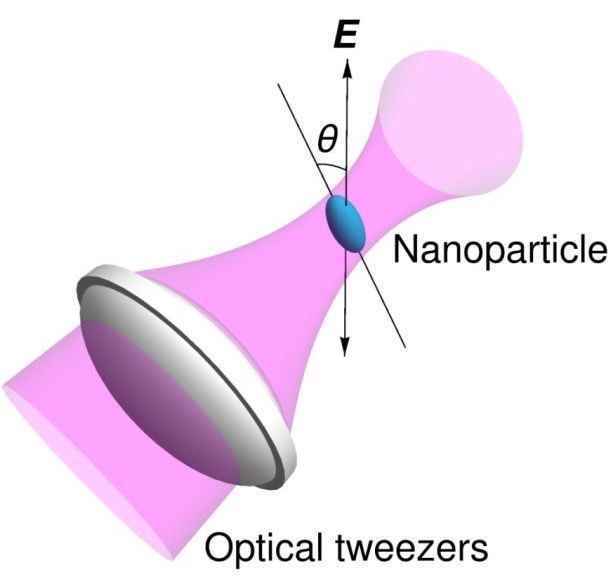Researchers have levitated a tiny nanodiamond particle with a laser in a vacuum chamber, using the technique for the first time to detect and measure its “torsional vibration,” an advance that could bring new types of sensors and studies in quantum mechanics.
The experiment represents a nanoscale version of the torsion balance used in the classic Cavendish experiment, performed in 1798 by British scientist Henry Cavendish, which determined Newton’s gravitational constant. A bar balancing two lead spheres at either end was suspended on a thin metal wire. Gravity acting on the two weights caused the wire and bar to twist, and this twisting — or torsion — was measured to calculate the gravitational force.
In the new experiment, an oblong-shaped nanodiamond levitated by a laser beam in a vacuum chamber served the same role as the bar, and the laser beam served the same role as the wire in Cavendish’s experiment.
